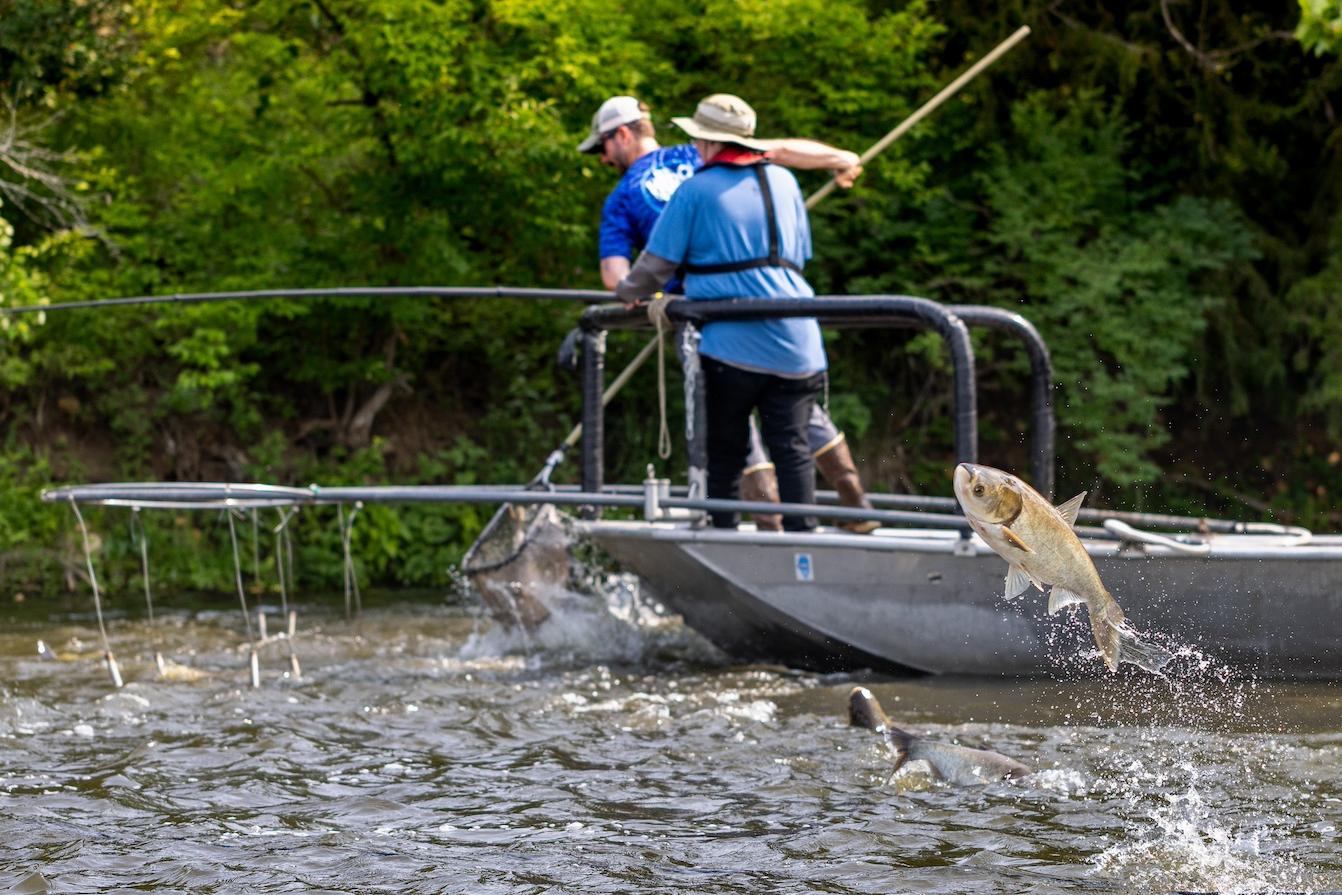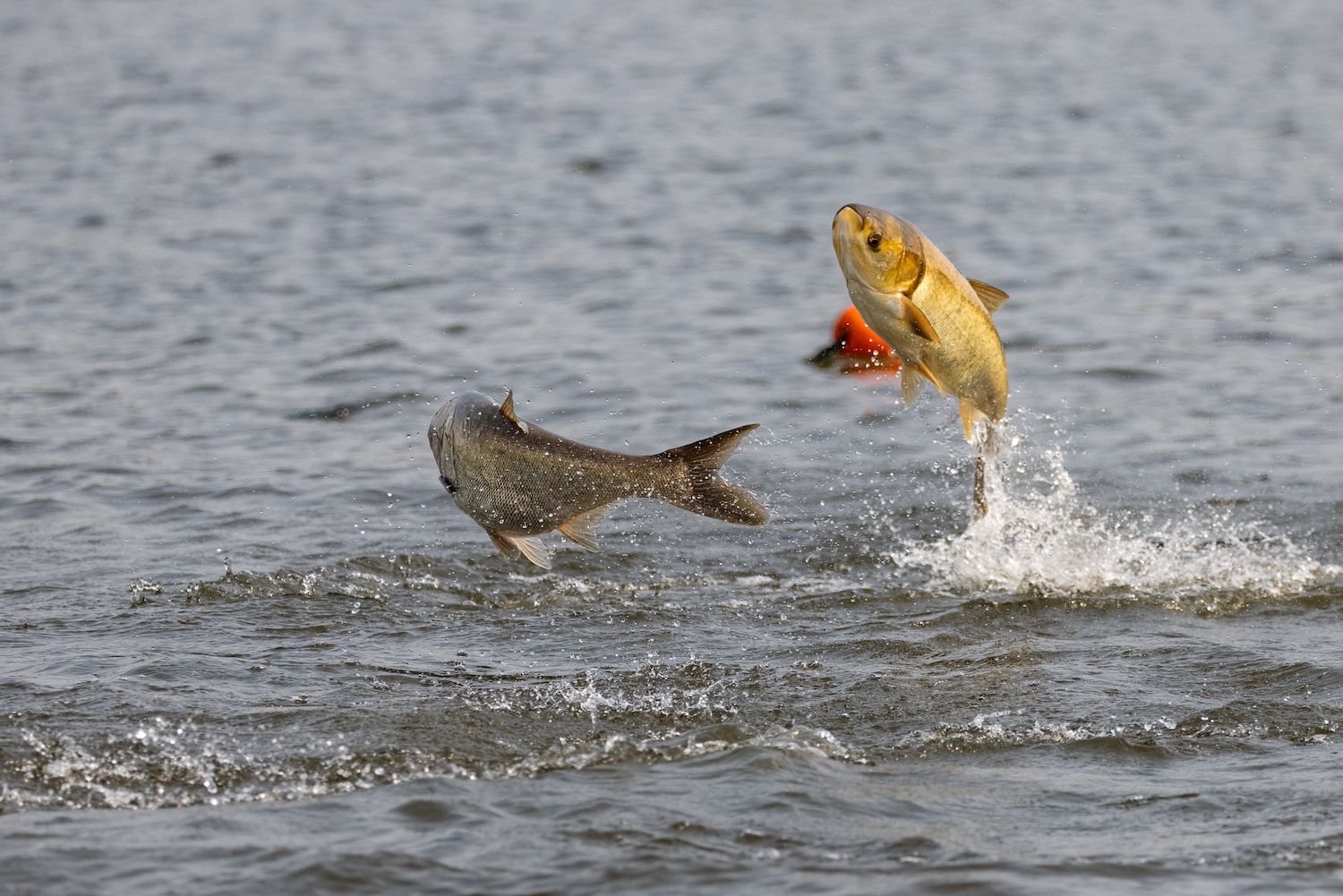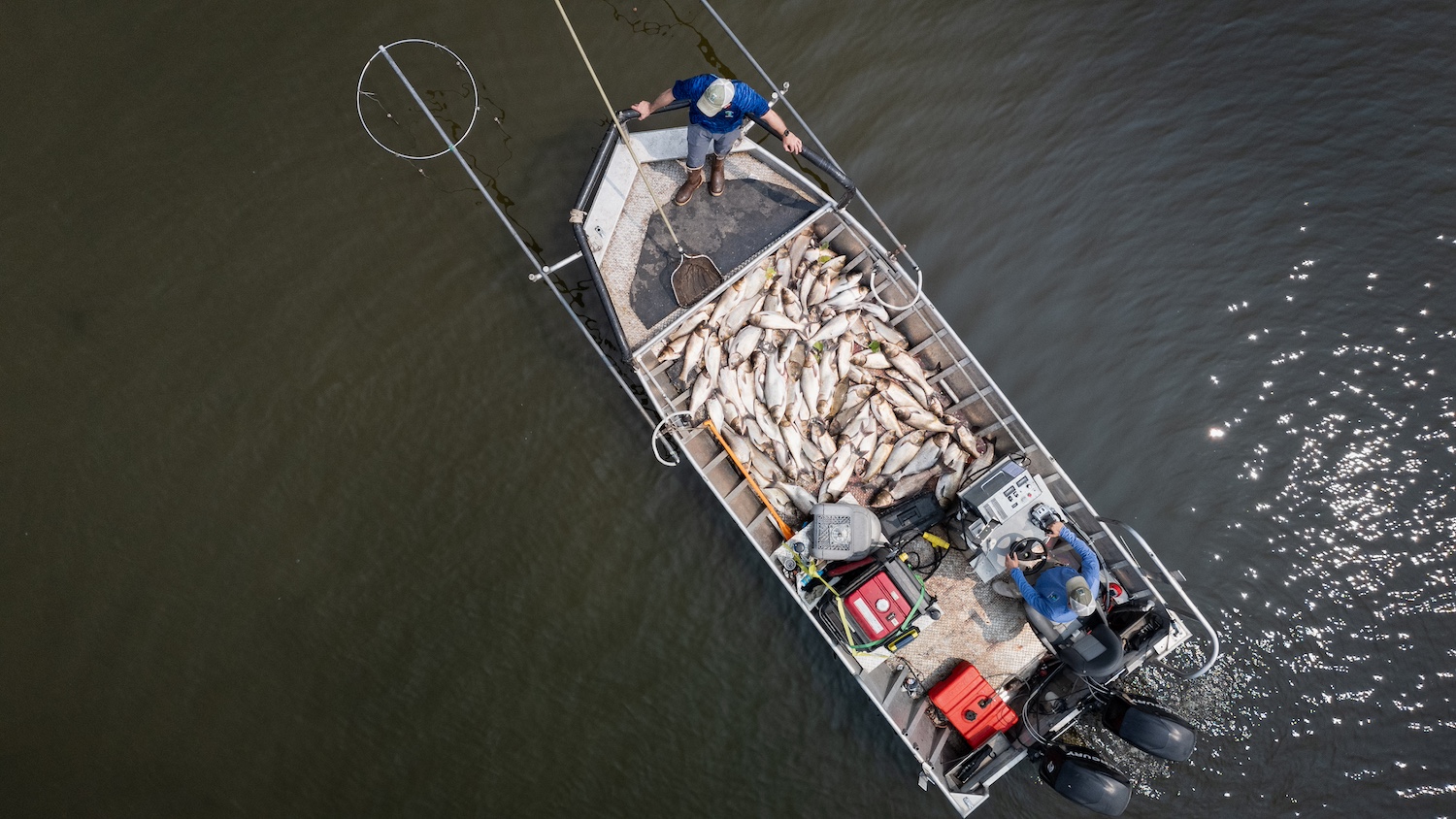
Invasive carp, which outeat and outbreed native species in the United States and likely cannot be eradicated, jump out of the water near a fishing boat. (Image: Keith Arnold/WWF-US)
The World Wildlife Fund (WWF) wants to turn invasive carp into pet food. Doing so could shrink the nearly-impossible-to-eliminate population, with numerous environmental, economic, and even nutritional benefits. But the conservation organization will need to encourage cooperation across the industry to make it happen.
Four species of invasive carp are in the United States: silver, black, bighead and grass. They are the descendants of fish originally brought to the country in the 1970s to clean up algae in ponds and wastewater treatment facilities, but it wasn’t long before they escaped and spread to natural waterways where they outeat and outbreed native species and negatively impact ecosystems and communities that rely on commercial fishing and outdoor recreation.
“There's really no reasonable way that carp would be eradicated from the United States. They are just too prolific, too widespread at this point,” Julia Kurnik, WWF’s senior director of innovation startups, told TriplePundit. “The question becomes, can you use market forces to minimize the damage?”
A healthy ingredient for dogs and cats
Although Carp is a popular food in other countries, it carries a stigma in the U.S. The fish have intramuscular bones that make them unsuitable for the type of fillets that Americans are accustomed to, Kurnik said. While the options for human consumption of carp in the U.S. are limited, the possibilities are wide open when it comes to pet food and treats. Niche producers are already using silver carp as a main ingredient.
“When we talk to veterinarians and experts in this space, they also share that it is a very healthy product,” Kurnik said. Carp is a low-allergen protein that could be beneficial for dogs allergic to chicken or other ingredients. Invasive carp are high in many vitamins and minerals that pets need, according to a recent WWF report. These include Omega-3s, phosphorus, calcium, and vitamins A, D and E.

Keeping pet food sustainable
“In general, pet food is very sustainable. Traditionally, with large-scale pet food companies, they are using byproducts of human consumption, so it has a low environmental footprint,” Kurnik said. “The problem is … the supply of human [consumption] byproducts is going up at a slower rate than the demand in the pet food industry.”
As the demand for animal protein byproducts rises, there won’t be enough to supply pet food manufacturers, leading to raising livestock purely for pet food, she said.
“From an environmental standpoint, we would not want to see that happen,” she said. “[Invasive carp] does provide another protein source and a very sustainable one, one we would love to see being used.”
The fish could also help temper the demand for soy, which is rising as animal byproducts become less abundant. Bringing invasive carp into the pet food supply chain could reduce the need for new soy fields, which could reduce deforestation, Kurnik said.
Economic and environmental benefits
If carp becomes a mainstream pet food ingredient, it could help turn the tide for fisherfolk in the Midwest who are wrestling with the aquatic invaders outcompeting their bread and butter. They’re generally paid 50 to 60 cents per pound for desirable native species, but carp are only worth around 10 cents a pound in eradication subsidies, Kurnik said. By creating a market for the invasive species, fisherfolk would have the opportunity to earn a decent living by catching them.
It doesn’t have to be a huge market, either, which is why WWF is looking toward mainstream pet food as the solution, she said. The moderate amount of harvest needed to supply pet food makers could slow the spread enough to keep invasive species from reaching the Great Lakes, which is where efforts are largely focused.
“That does look like an actual, achievable environmental outcome,” Kurnik said. By reducing the number of carp in waterways, biodiversity, ecosystems, and water quality could potentially bounce back, too.

What's the holdup?
With so many potential benefits, turning invasive carp into a mainstream pet food ingredient seems like an obvious solution. So why hasn’t it happened?
Kurnik described it as a chicken-and-egg problem, or perhaps more aptly, a fish and roe problem. No large-scale invasive carp processors exist to supply the major pet food makers, nor are major pet food makers using the ingredient in a way that prompts processors to get into the business.
“There absolutely are some small-scale companies doing this. It tends to be niche, sort of higher-end pet treats, and a lot of that is because there's a lack of large-scale processing,” Kurnik said. “It's very, very expensive to source carp. There's no consistent supply of carp, so you can only have these smaller brands that are often sourcing from very tiny niche markets.”
That’s where WWF comes, the international nonprofit has the power to bring key players together to take the leap. “Everyone's just waiting for another one to commit,” Kurnik said. “Can we get those big pet food companies to the table with the people who would build or fund the processing, and sort of build a coalition and commitment to moving forward?”
It’s something WWF is actively working on, and it’s one situation in which the fact that invasive carp can’t be eradicated is actually helpful, she said. Neither party wants to invest in a supply chain or product if the ingredient will eventually dry up. While eradication was the first concern voiced by pet food companies, the sheer number of invasive carp means their investments won’t be at risk.
“We can actually do the research and firmly establish they will not be eradicated, but you can still do good by sourcing them,” Kurnik said. “Now that we're able to provide those answers formally, we are seeing a lot more excitement.”

Riya Anne Polcastro is an author, photographer and adventurer based out of Baja California Sur, México. She enjoys writing just about anything, from gritty fiction to business and environmental issues. She is especially interested in how sustainability can be harnessed to encourage economic and environmental equity between the Global South and North. One day she hopes to travel the world with nothing but a backpack and her trusty laptop.













